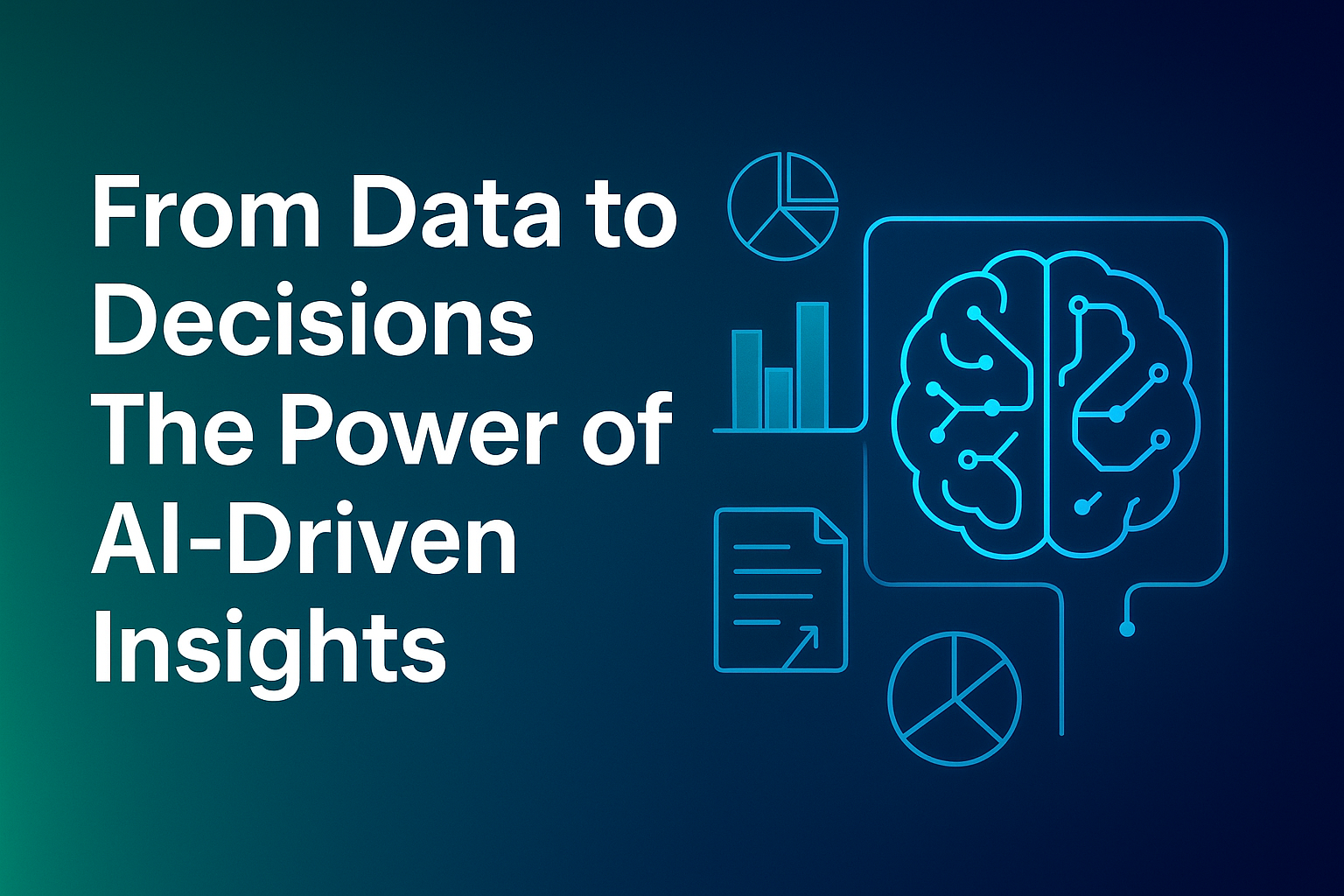Introduction
Businesses today are generating data at an unprecedented rate. By 2025, the world will produce over 181 zettabytes of data annually, up from 64.2 zettabytes in 2020 (Statista). Yet, most of this data remains underutilized. According to Forrester, 60–73% of enterprise data goes unused for analytics.
The real challenge isn’t collecting data, but extracting insights that drive decisions. This is where AI-driven insights reshape the decision-making process—turning raw information into actionable strategies with speed, precision, and foresight.
Why AI-Driven Insights Matter
AI brings context and intelligence to data by automating pattern recognition, anomaly detection, and predictive forecasting. Unlike traditional analytics, which often focuses on historical trends, AI leverages machine learning (ML), natural language processing (NLP), and predictive modeling to provide real-time and forward-looking insights.
Key Benefits of AI-Driven Insights
| Benefit | Impact |
| Speed | Reduces analysis time by up to 80% (Accenture) |
| Accuracy | ML-driven models can improve decision accuracy by 23% (PwC) |
| Predictive Capability | Identifies risks/opportunities ahead of time |
| Personalization | Enables customer experiences that boost retention by 27% (McKinsey) |
| Cost Efficiency | Companies report 20–30% cost reduction in operations with AI insights (Deloitte) |
Real-World Applications of AI-Driven Insights
1. Customer Experience (CX)
AI analyzes customer behavior, purchase history, and sentiment data to personalize experiences.
- Example: Netflix saves $1 billion annually by using AI-powered recommendation engines.
2. Financial Risk Management
Banks use AI models for fraud detection, improving detection rates by up to 90% compared to traditional systems.
3. Healthcare
AI-driven analytics help hospitals predict patient readmission risks and optimize resource allocation. By 2030, AI in healthcare is projected to save $150 billion annually.
4. Supply Chain Optimization
AI insights reduce logistics costs by 15% and improve inventory accuracy by 35%.
Case Study Snapshot: AI in Retail
| Retail Challenge | AI-Driven Insight | Result |
| Inventory Overstocks | Predictive demand forecasting | 25% reduction in overstock costs |
| Customer Churn | Sentiment & behavior analysis | 15% higher customer retention |
| Pricing Strategy | Dynamic AI-based pricing | 12% increase in revenue |
Retailers adopting AI-driven insights outperform peers with 2x faster decision-making and significant operational efficiency gains.
Statistics That Prove the Impact
- 44% of executives say AI improves decision-making significantly.
- 54% of organizations use AI to improve business analytics.
- Companies using AI for insights see 19% higher revenue growth compared to those who don’t.
- By 2030, AI could contribute $15.7 trillion to the global economy, largely through productivity and decision-making gains.
Challenges in Leveraging AI Insights
While the potential is massive, businesses must address:
- Data Quality Issues – Poor or incomplete data can mislead AI models.
- Bias in AI Models – Training data biases can skew decisions.
- Integration with Legacy Systems – Many enterprises struggle to align AI with existing BI tools.
- Change Management – Decision-makers must build trust in AI-driven recommendations.
The Future of AI-Driven Decision Making
| Future Trend | Projection | Source |
| AI-augmented decision-making | 70% of businesses by 2030 | Gartner |
| Real-time analytics adoption | Will triple by 2026 | IDC |
| Explainable AI (XAI) integration | Becomes a standard by 2027 | McKinsey |
| Decision intelligence platforms | A $34B market by 2032 | MarketsandMarkets |
AI is evolving from a supportive tool to a strategic partner in decision-making, driving decisions across finance, healthcare, retail, and IT operations.
Conclusion
The transition from data to decisions is no longer a manual, time-intensive process. AI-driven insights empower organizations to move faster, with greater accuracy, and at scale.
From predicting risks to personalizing customer journeys, AI is revolutionizing how enterprises approach strategic decisions. Those who invest in AI-powered analytics today will be the ones to lead in tomorrow’s competitive landscape.







